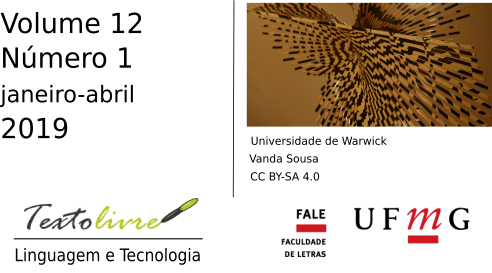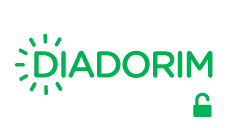Design and use of a web application for the field of statistics considering the assure model and data science
DOI:
https://doi.org/10.17851/1983-3652.12.1.48-71Keywords:
tecnología educativa, modelo ASSURE, enseñanza superior, ciencia de datos, aprendizaje automático superior, aprendizaje automáticoAbstract
RESUMEN: Esta investigación mixta tiene como objetivo analizar el impacto de laAplicación web para el Proceso Educativo sobre la Prueba de Hipótesis (APEPH)en la asignatura Instrumentación estadística para los negocios durante el ciclo escolar 2018. El modelo instruccional ASSURE permite la organización, construcción e implementación de la aplicación APEPH. Los resultados del aprendizaje automático (regresión lineal) con 60%, 70% y 80% de entrenamiento indican que el contenido, el diseño web y la simulación de datos en la aplicación APEPH influyen positivamente en el aprendizaje y la motivación del estudiante. Asimismo, la ciencia de datos permite la construcción de 6 modelos predictivos sobre el uso de la aplicación APEPH en el proceso educativo por medio de la técnica árbol de decisión. Por último, la aplicación APEPH facilita el proceso de enseñanza-aprendizaje sobre la estadística por medio del contenido, el diseño web y la simulación de datos.
PALABRAS CLAVE: tecnología educativa; modelo ASSURE; enseñanza superior; ciencia de datos; aprendizaje automático.
ABSTRACT:
This mixed research aims at analyzing the impact of the Web Application for the Educational Process on the Hypothesis Test (APEPH) in the Statistical Instrumentation for Business subject during the 2018 school year. ASSURE model allows the organization, construction and implementation of the APEPH application. The results of machine learning (linear regression) with 60%, 70% and 80% of training indicate that the content, web design and simulation of data in the APEPH application have a positive influence on the student's learning and motivation. Likewise, data science allows the construction of 6 predictive models on the use of the APEPH application in the educational process by means of the decision tree technique. Finally, the APEPH application facilitates the teaching-learning process on statistics through the content, web design and data simulation.
KEYWORDS: educational technology; ASSURE model; higher education; data science; machine learning.
Downloads
References
CARRANZA ALCÁNTAR, M. R.; ISLAS TORRES, C.; MACIEL GÓMEZ, M. L. Percepción de los estudiantes respecto del uso de las TIC y el aprendizaje del idioma inglés. Apertura, v. 10, n. 2, p. 50-63, 2018.
CHIECHER, A. C.; MELGAR, M. F. ¿Lo saben todo? Innovaciones educativas orientadas a promover competencias digitales en universitarios. Apertura, v. 10, n. 2, p. 110-123, 2018.
DARADOUMIS, T.; MARQUES PUIG, J. M.; ARGUEDAS, M.; CALVET LIÑAN, L. Analyzing students' perceptions to improve the design of an automated assessment tool in online distributed programming. Computers & Education, v. 128, p. 159-170, 2019.
DOMÍNGUEZ PÉREZ, C.; ORGANISTA SANDOVAL, J.; LÓPEZ ORNELAS, M. Diseño instruccional para el desarrollo de contenidos educativos digitales para teléfonos inteligentes. Apertura, v. 10, n. 2, p. 80-93, 2018.
JAN, S. K.; VLACHOPOULOS, P. Influence of Learning Design of the Formation of Online Communities of Learning. International Review of Research in Open and Distributed Learning, v. 19, n. 4, p. 1-16, 2018.
LANGEN, F. Sustainability of Open Education Through Collaboration. International Review of Research in Open and Distributed Learning, v. 19, n. 5, p. 95-111, 2018.
MAICAN, C. I.; CAZAN, A. M.; LIXANDROIU, R. C.; DOVLEAC, L. A study on academic staff personality and technology acceptance: The case of communication and collaboration applications. Computers & Education, v. 128, p. 113-131, 2019.
MAKOE, M.; SHANDU, T. Developing a Mobile App for Learning English Vocabulary in an Open Distance Learning Context. International Review of Research in Open and Distributed Learning, v. 19, n. 4, p. 208-221, 2018.
MARTÍNEZ RODRÍGUEZ, A. C. El diseño instruccional en la educación a distancia. Un acercamiento a los Modelos. Apertura, v. 9, n. 2, p. 104-119, 2009.
MARZOUKI, O. F.; IDRISSI, M. K.; BENNANI, S. Effects of Social Constructivist Mobile Learning Environments on Knowledge Acquisition: A Meta-Analysis. International Journal of Interactive Mobile Technologies, v. 11, n. 1, p. 18-39, 2017.
METZ, N.; BEZUIDENHOUT, A. An importance competence analysis of the roles and competencies of e-tutors at an open distance learning institution. Australasian Journal of Educational Technology, v. 34, n. 5, p. 27-43, 2018.
NELSON, M. J.; VOITHOFER, R.; CHENG, S. L. Mediating factors that influence the technology integration practices of teacher educators. Computers & Education, v. 128, p. 330-344, 2019.
RAMÍREZ MERA, U. N.; BARRAGÁN LÓPEZ, J. F. Autopercepción de estudiantes universitarios sobre el uso de tecnologías digitales para el aprendizaje. Apertura, v. 10, n. 2, p. 94-109, 2018.
RASMUSSEN, K. Looking Beyond Institutional Boundaries: Examining Adults’ Experience of Choosing Online as Part of Their Post-Secondary Studies. International Review of Research in Open and Distributed Learning, v. 19, n. 5, p. 112-127, 2018.
SALAS RUEDA, R. A. The impact of usable system for regression analysis in higher education. International Journal of Educational Technology in Higher Education, v. 13, n. 1, p. 1-10, 2016.
SALAS RUEDA, R. A. Analysis on the Use of Continuous Improvement, Technology and Flipped Classroom in the Teaching-Learning Process by means of Data Science. Online Journal of Communication and Media Technologies, v. 8, n. 4, p. 325-343, 2018.
SALAS RUEDA, R. A.; SALAS RUEDA, R. D. Impacto de la red social Facebook en el proceso educativo superior de las matemáticas considerando la ciencia de datos. Noesis: Revista de Ciencias Sociales y Humanidades, v. 28, n. 1, p. 23-42, 2019.
SALAS RUEDA, R. A.; SALAS RUEDA, E. P.; SALAS RUEDA, R. D.; VÁRGAS PÉREZ, Y. M. Análisis de la Aplicación Web Para la Estimación Puntual por medio de la Ciencia de Datos. Revista Dilemas Contemporáneos: Educación, Política y Valores, v. 6, n. 2, p. 1-25, 2019.
SALAS RUEDA, R. A.; SALAS SILIS, J. A. Uso del modelo Addie durante la construcción del Juego para el Proceso Educativo sobre Php (JPEP). Madrid: 3Ciencias, 2018.
SCHERER, R.; SIDDIQ, F.; TONDEUR, J. The technology acceptance model (TAM): A meta-analytic structural equation modeling approach to explaining teachers’ adoption of digital technology in education. Computers & Education, v. 128, p. 13-35, 2019.
SIEW, P. H. Pedagogical Change in Mathematics Learning: Harnessing the Power of Digital Game-Based Learning. Educational Technology & Society, v. 21, n. 4, p. 259-276, 2018.
YIP, J.; WONG, S. H.; YICK, K. L.; CHAN, K.; WONG, K. H. Improving quality of teaching and learning in classes by using augmented reality video. Computers & Education, v. 128, p. 88-101, 2019.
YUNOS, M. A.; ATAN, N. A.; SAID, M. N.; MOKHTAR, N.; SAMAH, N. A Collaborative Learning in Authentic Environment Apps to Promote Preschool Basic Scientific Process Skills. International Journal of Interactive Mobile Technologies, v. 11, n. 3, p. 4-15, 2017.
Downloads
Published
Issue
Section
License
This is an open access article that allows unrestricted use, distribution and reproduction in any medium as long as the original article is properly cited.











